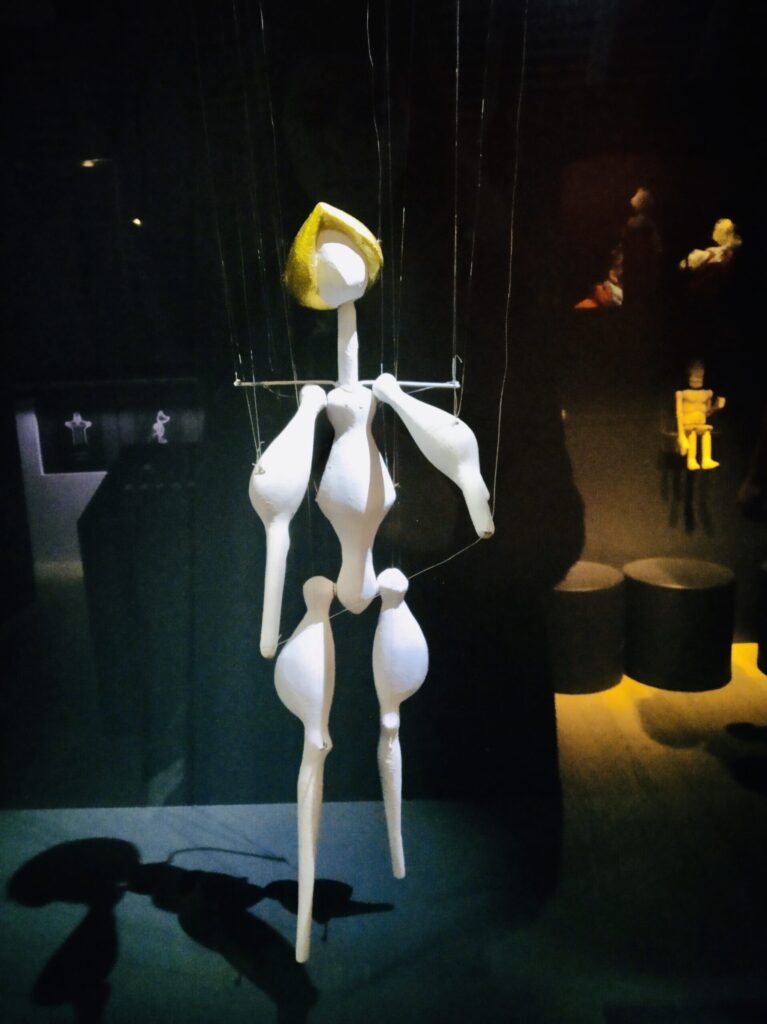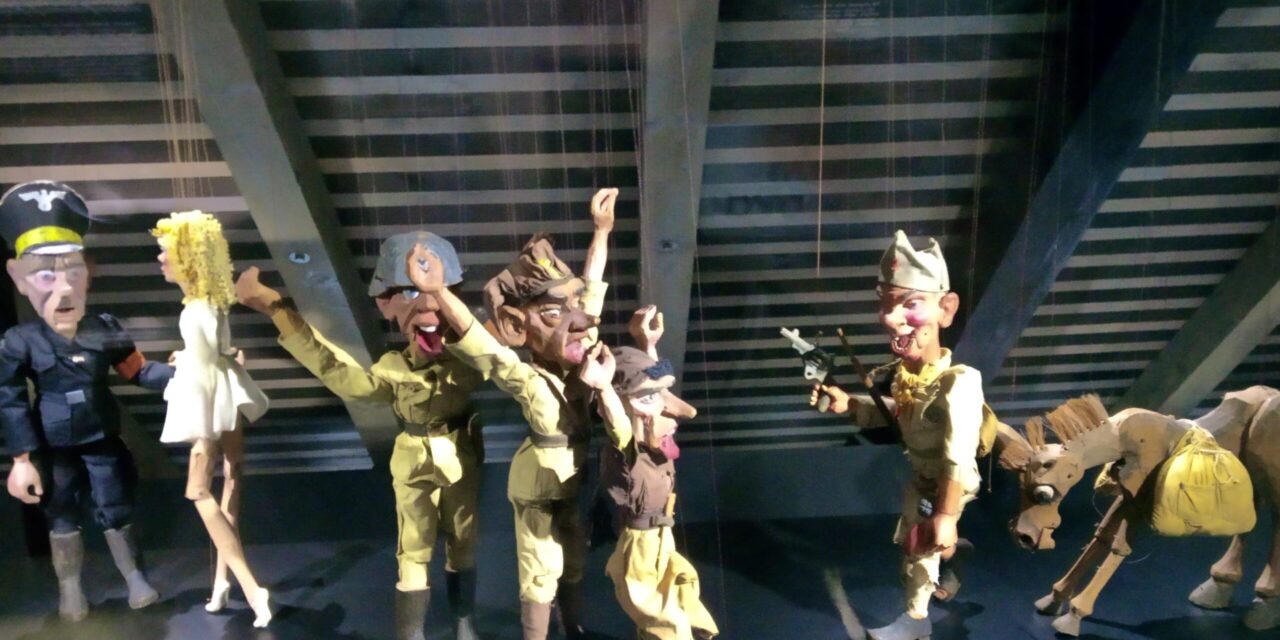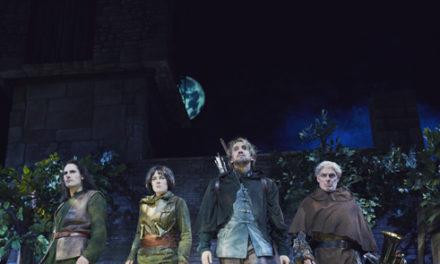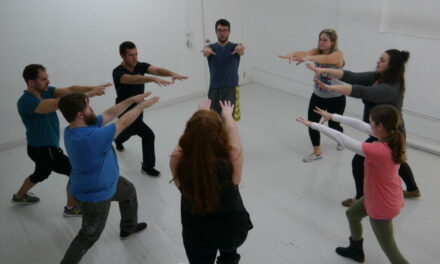“The puppet says everything that needs to be said so that we are not affected. When we truly believe in them, they give us love, trust, and sincerity.” This is the epigraph from the book Faith in the Puppet by Edi Majaron, director of Ljubljana Puppet Theatre. The relationship between the audience and the puppet is strange, psychologically compelling and almost magical. A puppet is often a child’s first encounter with theatre, so as adults we never doubt its words, we indulge in the simplicity of its problem(s) and enjoy its story.
There are documents stating that human-form figurines with magical features existed in the earliest civilizations, however the rituals in which they were used do not have the characteristics of theatre. Instead, they were closely related to religion, so they will not be discussed in this text. The Serbian word for puppet, lutka, is derived from the Latin noun ludus, and means game, play, acting, entertainment, or toy. From ancient Greece onwards, the appearance and role of the puppet in theatre have changed. What remains the same is the puppet’s educational character, the audience’s undiminished belief in the puppet itself, the fascination with an animated object, and the narrative it tells. The question is then: how did the puppet manage to maintain a continuous connection with the spectator throughout history and what did it talk about?
A Rebellious Puppet
The first theatre puppets were made between 4th or 5th Century BC and based on characters from Roman theatres. These include Manduka (clumsy), Buka (calculated, ingenious), Dasenus (chatty). These three national heroes gave a critical view of daily social and political situations. Due to the contemporary nature of the content and its subversive, critical attitude, the performances aroused a great amount of interest. As a result, puppet plays were often banned by authorities, but the actors would justify their work by saying that the audience did not understand them well enough because their puppets spoke indistinctly. The puppet thus functioned as a metaphor, used by actors dissatisfied with the government and the stage became a meeting place for like-minded people.
Since then, puppets have had this role on stage – they serve as an analyst of the government. They represented heroes, members of the lower class, people who were marginalized, disenfranchised, and oppressed, but who have strong, negative attitudes towards political structures. Therefore, the puppet became a national hero who could fight negative aspects of society and symbolized the voice of public opinion. By the end of the play, the puppet manages to overcome obstacles using physical violence in pre-twentieth century theatre, or using its wisdom from the 20th Century onwards.
Dramaturgically, such a play is engaging and contains a necessary element – conflict. This meant the viewer’s identification with the main character is easily achieved, and the ending is happy and educational. As puppet troupes traveled, this art spread and the hero character adapted to suit individual cultures, was decorated with national symbols and named accordingly. For example the Czech Republic invented Kashparek, the Netherlands made Jan Klasen, Russia created Petruska, Hungary made Knight Laszlo, the nations under Turkish influence, Karadjoz, and Serbia named its puppet Todor.
This kind of puppet use and dramaturgy do not have to be made only for older audiences. If the subject matter is adapted for children, it can certainly have an educational effect. Majaron suggests that the hero’s conflict in a children’s play could represent the relationship between the child and an authority figure or friend. Therefore, animated objects can be effective if used within applied theatre, as they can help children overcome problems with their peers.
An Obedient Puppet
The marionette has been one of the most popular types of puppets since ancient times. It has appeared completely independently in China, Japan, and individual European countries. Marionettes are extremely mobile, with graceful movements that are more reminiscent of hovering than walking. They are tied with strings or wires so that the actor moves them by moving the strings.
Its name probably comes from the diminutive form of the name Maria – the Mother of God. In the 9th Century, marionettes were used for telling biblical stories, most often about the birth of Jesus. The puppet therefore had an educational role and was used to spread Christianity. The church used the language of theatre to stage moral performances, to bring the Bible closer to the general population, and explain Christian dogmas and norms.

Marionette form the play The Little Prince, 1979, Museum of Puppetry in Ljubljana. Photo by Divna Stojanov.
However, long before Jesus there were writings of Plato and Aristotle, in which the subject and word marionette were mentioned. In the Laws, Plato classifies puppetry as a popular performing art. He also writes that every man is a marionette in the hands of the gods, and the marionette’s strings are our passions. Thus, the marionette becomes a metaphor for a person being manipulated.
Aristotle also explains movement in his work On the Cosmos, saying: ”God creates with the movement in the same way a man moves a string and makes a puppet move.” Apart from the fact that the theatre puppet offers many precise possibilities for movement and playing with props (it can blink, can be used with a sword, it can turn its head to change its face or even gender), it creates and problematizes a metaphor for being controlled by another. In puppet theatre, it is always clear that the puppeteer controls the object, but with other types of puppet, the manipulation is not so obvious and does not have such detailed movement. This created the possibility of using themes in which the hero is occupied or controlled by a personified, embodied force. In 1938, the father of Slovenian puppetry Milan Klemenčič performed Goethe’s Doctor Faustus in front of his family and friends at home, using puppets as a symbol of Mephistopheles’ control over Faust.
An Agitating Puppet
The puppet has not only been used to spread Christian ideology. In the 20th Century during the First World War in Germany and Russia, puppets were used to spread political propaganda. Russia’s Red Parsley and Germany’s Kasperl spoke about nationalism. The narratives did not differ much from a classic story in which the hero protests and fights against injustice, however the contemporary folk heroes did not point out society’s problems. Rather, they were put into contexts which suited their respective governments. Max Jakob, a German puppeteer at that time, wrote in his memoirs that a man can work for Kasperl only if he has a good sense of humor.
After Germany’s attack on the Soviet Union in the Second World War, puppet directors were ordered to stage propaganda plays for soldiers. Troupes visited battlefields, hospitals, and barracks. There was a similar situation in France and Poland. It was necessary to arouse resistance within domestic armies, as well as to mock the Nazis. A grotesque puppet of Hitler was sometimes used for that purpose. The fact that all puppets were handled by anti-fascists was especially pleasing – a puppet of Hitler handled by a Partisan, a member of the Yugoslav National Liberation Movement! On the other hand, the German puppet theatre that spoke on behalf of the National Socialist society also suffered from the regime’s influence.
During the Second World War, the Partisan Puppet Theatre was opened in Slovenia, where they created plays about Partisan heroes. They were designed to motivate and raise the spirits of military groups fighting the enemy. The plots were simple; they aimed to ridicule the enemy and glorify the courage of the Partisans.
The power of the doll was known and gladly used on both sides of the war. Theater scholar Jurkovski notes in his book A History of European Puppetry that nationalism begins in childhood, and puppet theatre appeals to both children as well as adults, so it is an unmatchable weapon in the fight for allegiance. The puppet is trusted without question. On an associative level, we connect it with the most naive stage of life – childhood. It communicates visually in a seemingly harmless, easy and likable way. It is convincing, understandable to everyone, and arouses a childlike optimism in the viewer, which provides an opportunity to manipulate the audience.
A Provocative Doll
In the 20th Century, governments fully understood the potential influence of puppet theatre. Avant-garde artists also realized this. Peter Brook claimed that puppetry from the last century onwards is experiencing a complete renaissance, which is necessary in order to raise standards. Through the use of stage toys in the play King Ibi, Alfred Jari managed to shock audiences with swear words, protest against theatrical elitism, and ridicule social conventions. Just like in ancient Rome, the puppet represented a conduit for the author’s truth. Eastern European countries affected by the rigorous censorship of art in the 20th Century used puppets to avoid this silencing. Subversive, critical texts uttered from the puppet’s mouth would escape censors. Samuel Beckett’s works were a great inspiration for writing and performing puppet shows in the former Yugoslavia. What the man was not allowed to say, the puppet said instead.
A Doll for Children
The first thought that comes to mind when a puppet show is mentioned is probably children’s theatre. Although history has shown that the puppet works well in theatre for adults, subconsciously it is dedicated to young people. Puppet shows whose audiences are children must have an educational tone, retain attention, and trigger emotions. One should consider narrative simplicity, the clarity of the relationship between the characters, and an easily conveyed message. The interaction between puppeteers and children is also crucial, so a key element is playfulness. A puppet should create space for children to freely imagine and explore. The child does not consider the puppet to be an authority so it accepts the puppet, without question or fear. The puppet is familiar to them from play in which they bring a toy to life and give it human qualities. As it has already been said, a doll can also be a remedy for healing certain traumas or overcoming problems. Puppetry for children experienced a great step forward and popularity during the rise of television, with shows like The Muppet Show and Sesame Street. In these shows, the key principles of theatrical puppetry were retained.
From vox populi in the Middle Ages, a source of fun and laughter in the Renaissance, puppet operas in Seventeenth-Century France and Italy, an ideological proclamation during wartime, to a brave critic of the system, this creature of the stage confirmed that a skilled puppeteer could express a variety of stories. This could not be done so convincingly in other forms of theatre. If the puppet is trusted, if its enormous strength is not doubted, it will surely provide real magic in return.
This article was originally posted in Serbian in P.U.L.S.E. on May 16th, 2020 and has been reposted with permission. Translation and photos by Divna Stojanov. To read the original article, click here.
This post was written by the author in their personal capacity.The opinions expressed in this article are the author’s own and do not reflect the view of The Theatre Times, their staff or collaborators.
This post was written by Divna Stojanov.
The views expressed here belong to the author and do not necessarily reflect our views and opinions.

















